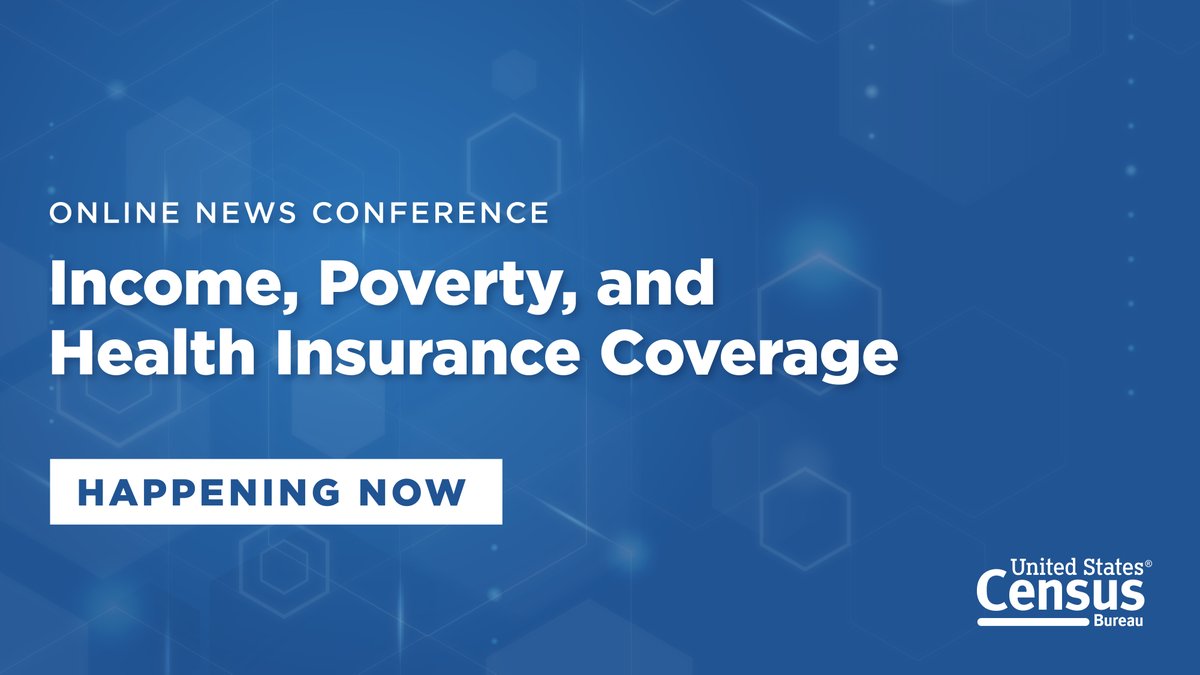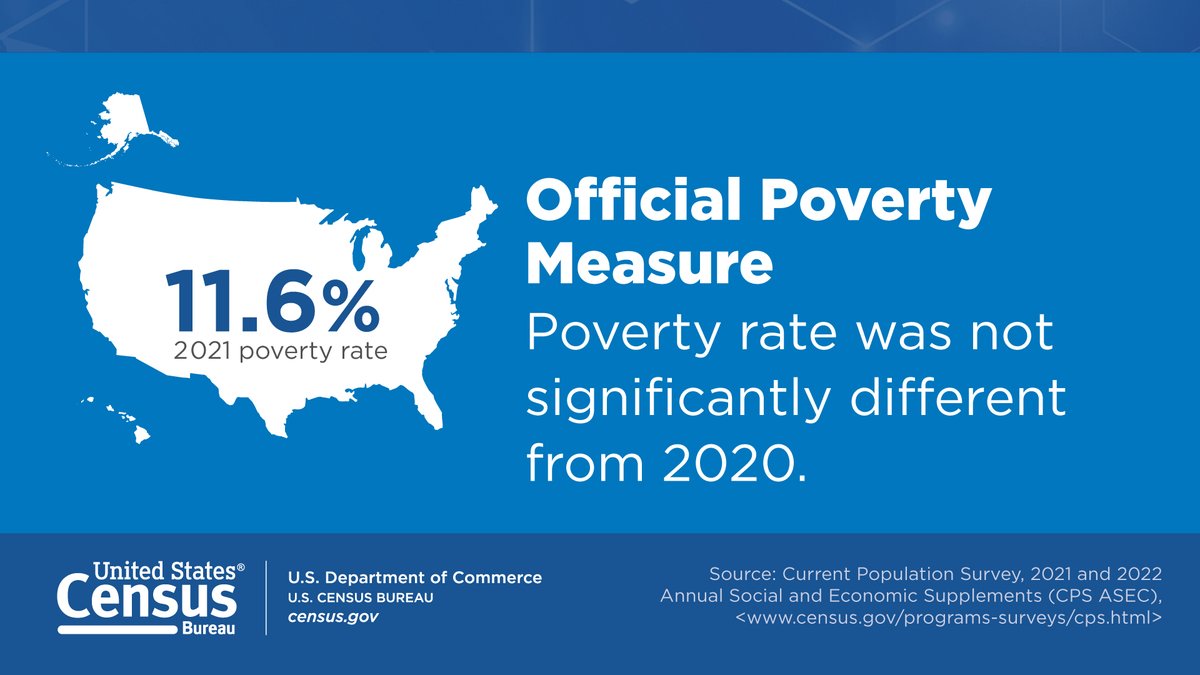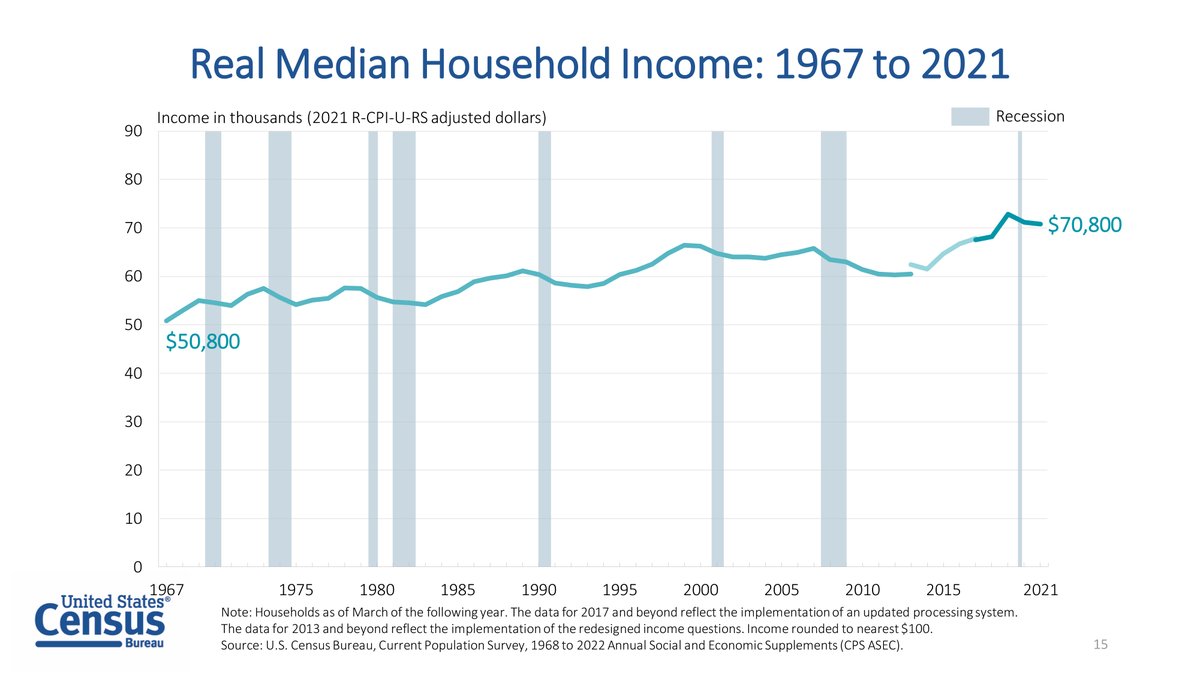
#HappeningNow: Watch today’s 10AM ET news conference for findings of three new reports: Income in the United States: 2021, Poverty in the United States: 2021, and Health Insurance in the United States: 2021.
Tune in or follow this thread for highlights. census.gov/newsroom/press…
Tune in or follow this thread for highlights. census.gov/newsroom/press…

4. The percentage of people with health insurance coverage for some or all of the calendar year 2021 was 91.7 percent. 

5. The number of total workers was not statistically different, but the number of full-time, year-round workers increased by about 11.1 million.
7. In 2021, there were 37.9 million people in official poverty, not statistically different from 2020. 

8. Female householder families had the highest poverty rate among primary families, at 23 percent, while married-couple families had the lowest, at 4.8 percent. 

9. The SPM rate for 2021 was 3.8 percentage points lower than the official poverty rate of 7.8 percent. This is the second time in the history of the SPM that poverty is lower using the SPM than the official measure. 

10. The differences in the two poverty measures are especially apparent for children. In 2021, the gap between the official and SPM rates for children grew to 10.1 percentage points. This is the largest gap between the measures and the lowest SPM child poverty rate on record. 

11. 9.6 million people were taken out of poverty by refundable tax credits. Of these, 4.9 million were children. Specifically, the child tax credit lifted 5.3 million people out of poverty in 2021. 

12. An estimated 8.3 percent of the population, or about 27.2 million people, did not have health insurance coverage at any point in 2021. 

13. Between 2020 and 2021, the percentage of people with public coverage increased by 1.2 percentage-points. Over the same period, the percentage of people with private coverage decreased by 0.6 percentage points. 

14. Expanded public programs during the pandemic may have contributed to a 0.4 percentage-point drop in the uninsured rate for children in families with incomes at or above 400% of poverty. 

15. Between 2020 and 2021, public coverage rates increased among children under age 19 and by 1.3 percentage-points and for adults aged 19 to 64 by 0.9 percentage points. 

16. The uninsured rate increased to 9.1 percent for full-time, full-year workers in 2021. Some of this difference is likely due to changes in the composition of the workforce. 

17. Here’s a snapshot of the nation’s social and economic well-being according to today’s new reports from the 2022 Current Population Survey Annual Social and Economic Supplement (CPS ASEC).
For more info: census.gov/newsroom/press…
For more info: census.gov/newsroom/press…

Correction: 1. Real median household income was $70,784 in 2021, not statistically different from 2020. 

18. Thank you for following along with us! Check out our #AmericaCounts stories to explore more analysis of national income, poverty and health insurance coverage statistics.
👉 census.gov/topics/income-…
👉 census.gov/topics/income-…
Correction: 2. The official poverty rate in 2021 was 11.6 percent, not statistically different from 2020. 

Correction: 3. The Supplemental Poverty Measure (SPM) extends the official poverty measure to include the value of noncash benefits, stimulus payments, taxes, and other necessary expenses. The SPM rate in 2021 was 7.8 percent, 1.4 percentage points lower than 2020. 

• • •
Missing some Tweet in this thread? You can try to
force a refresh










